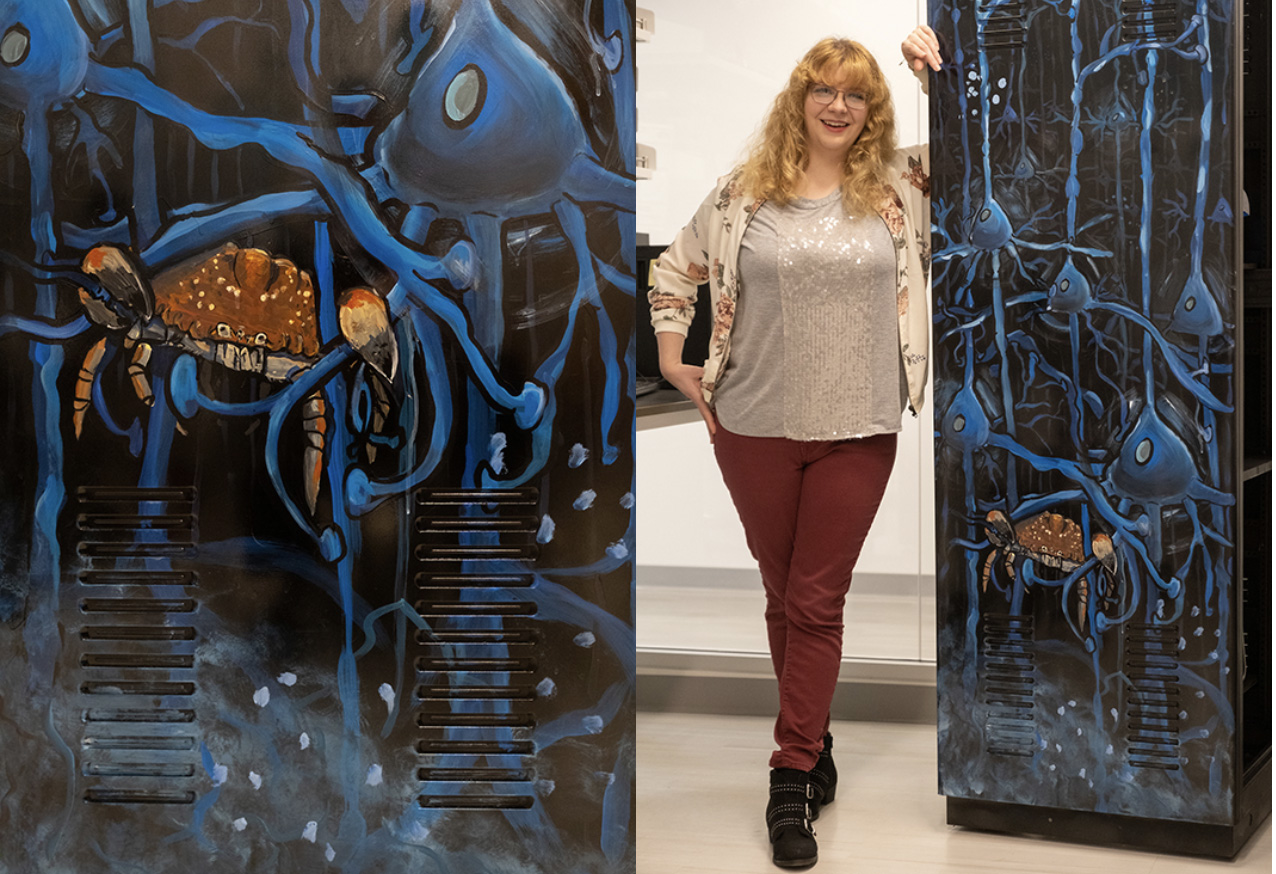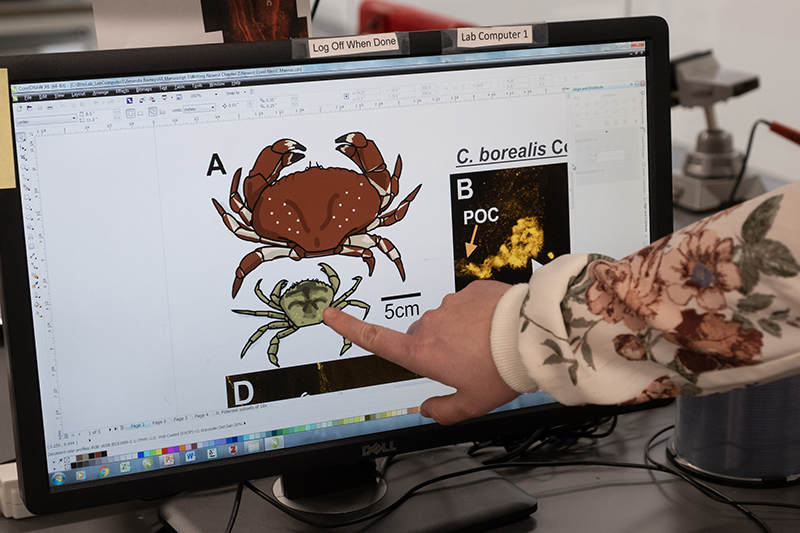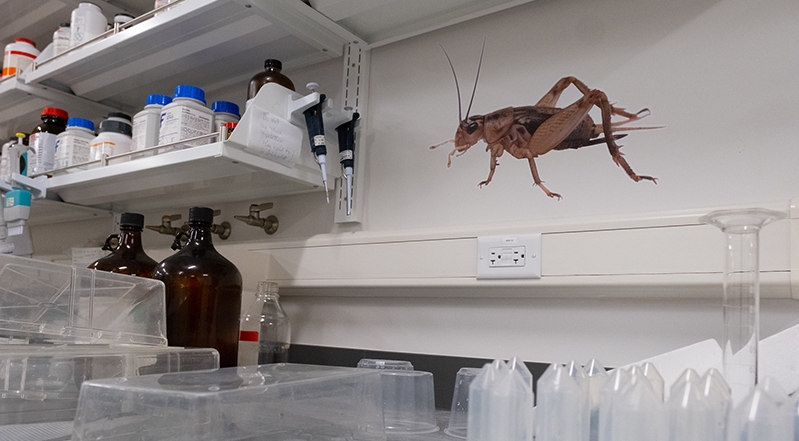

STEAM-powered and DIY: Mixing art, neurobiology and renovations in Pearson Hall
By Susan Meikle, university news and communications

View from the hallway of the collaborative lab space for faculty Dawn Blitz, Susan Hoffman
Walking down a hallway in Pearson Hall’s newly renovated research lab area, visitors can view a mural of the neuroscience research within.
Like in the 1966 science fiction film “Fantastic Voyage,” passersby can view a larger-than-life painting of the inner world of neurons. You can visualize, on a giant scale, the central nervous system of the Jonah crab.
The composition is in the research lab of neurobiologist Dawn Blitz, associate professor of biology.
After moving into the renovated lab space earlier this year, Blitz ended up with an electrophysiology rig cabinet she no longer needed.
She repurposed it as a cabinet to hold two printers. But the large metal cabinet lacked visual appeal.

Rainey creates her own graphics for presentations.
Blitz encouraged her graduate student Amanda Rainey (Miami ’13) to paint a design on the cabinet wall that faces the hallway.
Rainey — who had been a biology major and studio art minor as an undergraduate at Miami — created the painting earlier this summer. She designed and painted it during a period of several weeks while she was writing the introduction to her master’s thesis.
“I tried to put the overall picture of my research into the painting,” she said. “Our study model organism is the Jonah crab (Cancer borealis). In the painting, the crab is grabbing a neuron to 'get a handle on what’s going on' in the function of neurons,” and how they produce different behaviors.
Neurotransmitters, synaptic connections
Rainey will defend her master’s thesis this month. In August, she will join the doctoral program in neurobiology at Florida Atlantic University, leaving a “STEAM-powered (STEM + art) legacy in Pearson Hall.
"Amanda is an extremely talented artist who has really brightened up the lab with her beautiful micrographs, the amazing electrophysiology equipment rack and numerous drawings for presentations and
Collaborative research space

A cricket graphic decorates Killian's lab sink.
Like many of the renovated labs in Pearson, Blitz’s “Crab Lab” is in a shared collaborative space.
Tom Crist, chair and professor of biology, said that the new advanced, modular lab spaces being built in Pearson can be reconfigured, expanded or contracted as the scope of the research changes. "The flexibility of these modernized spaces will increase productivity, enhance partnerships and facilitate collaborative projects," he said.
Blitz's area is shared with associate professors of biology Susan Hoffman and Kathleen Killian.
Hoffman studies the evolutionary genetics of mammals, focusing on the northern migration of white-footed mouse populations.
Killian studies neuroscience and behavior, using
Pearson Hall renovations: Phase 2 to be completed in Summer 2020
60% energy footprint reduction; LEED gold certification targeted
Phase 1 of the Pearson Hall renovations focused on half of the building's heating, cooling and lab exhaust systems and half of its teaching and research laboratories. It added the modernized public welcome area on the ground floor and the glass-encased atrium in the center of the building.
Phase 2 will finalize the remaining research space renovations.
When the renovation is complete, Pearson Hall’s energy footprint will be reduced by more than 60%, thanks in large part to replacing the ventilation and water-conditioning systems with new efficient systems.
Replacing many concrete block walls with full-height glass walls allows numerous labs and classrooms to have natural lighting.
Read more about the renovations on the College of Arts and Science website.
